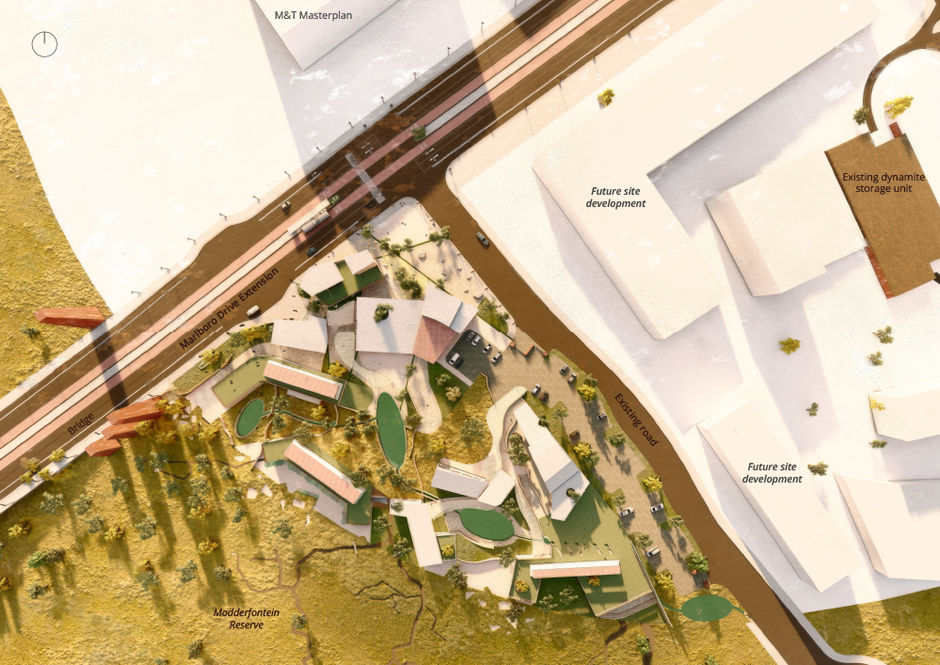


Ariella Eisenberg
Chemical Re-composition
Holistic Drug Rehabilitation in Modderfontein’s Green Spaces


Drug addiction is prevalent socially, in film and within Johannesburg’s context. Locals turn to drug use as a source of identity, meaning and belonging – which can be found in phenomenological practices.
Socially-conscious architecture can be used as a healing tool for vulnerable people and fragmented communities.
Urban design principles, phenomenology (Genius Loci; sensory experience; process and archetypes) and therapeutic architecture (open areas; fenestration views; light; colour; materiality and acoustics) can be applied to the conceptualisation and design of rehabilitative buildings and spaces to better recovery processes – especially in drug rehabilitation.
Modderfontein, like someone recovering from drug addiction, requires rehabilitation. These problems must be decomposed (dissected) to re-compose (rehabilitate) them. This project explores rehabilitation of the problems on three main scales and suggests ways of re-composing (rehabilitating) them through architectural conceptual drivers. The first driver is Kintsugi: a practice of re-composing what is broken (decomposed) by celebrating or highlighting the rehabilitation process. A second conceptual driver is chromatography which also deals with themes of decomposition and re-composition. The first and largest scale that requires rehabilitation is the fragmentation of communities surrounding Modderfontein. This segregation arose because of Apartheid planning and until today still requires the facilitation of a welcoming meeting point. Secondly, Modderfontein’s land has experienced damage through chemical dynamite explosions, identity-stripping alien trees and chemicals in its dams. The building uses rehabilitative indigenous landscaping and purifying water systems. Thirdly, on the smallest scale, the drug addict requires rehabilitation through the building’s programme. The programme is divided into three parts where firstly, earning is carried out through retail spaces. Secondly, destigmatising education facilities teach surrounding communities about drug use and rehabilitation awareness. The third area is healing which includes conventional inpatient and outpatient facilities, as well as a harm-reducing overdose prevention site (OPS) where addicts can use substances under professional observation.












